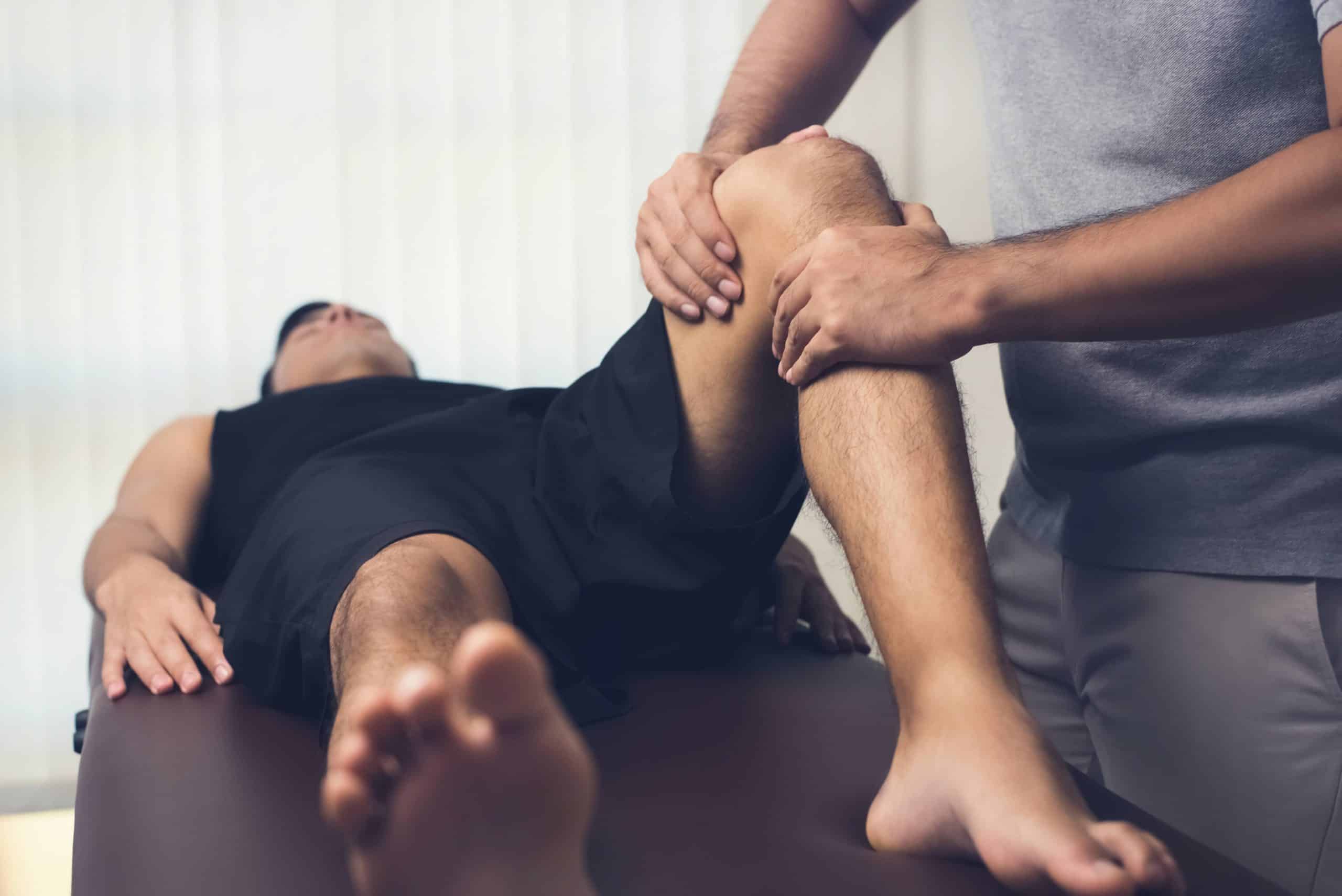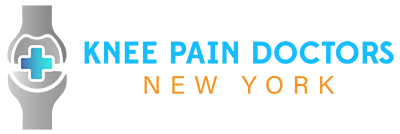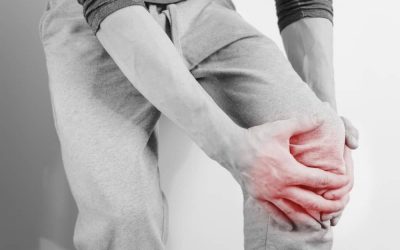Types of Knee Tendonitis
Common Types of Knee Tendonitis
Knee tendinitis is one of the most common overuse injuries related to the knees. It’s particularly common amongst athletes whose preferred sports involve frequent jumping, such as volleyball and basketball, which is why it’s colloquially known as a jumper’s knee. Generally speaking, the constant use of the patellar tendons between the kneecap and shin bone leads to tiny tears in the patellar tendon, which, over time, can lead to a big patellar tendon tear, leading to inflammation and other symptoms of knee tendinitis.
Knee tendinitis is one of the most common conditions related to the inflammation or tear of the patellar tendon, i.e., the fibrous cords attaching the muscles to the bones. However, the diagnosis of knee tendinitis can be particularly confusing because it can be categorized into multiple types of knee tendinitis, depending on the specific location and symptoms. Furthermore, athletes of different ages and participating in different sports are more likely to develop different types of knee tendinitis.
The board-certified knee pain doctors at our medical center run numerous diagnostic tests, such as physical exams, ultrasound, CT scans, and MRIs, to visualize the root cause of the problem. After diagnosing the specific type of tendinitis you’re suffering from, they curate the appropriate treatment plan. Unlike most other pain treatment clinics, we focus on non-opioid, non-surgical treatments that address the root cause of knee tendinitis, ensuring safe and long-lasting results. You may schedule an appointment online.
Please continue reading to learn about the types of knee tendinitis.
Pes Anserinus Tendonitis
The pes anserinus area refers to the region just underneath the kneecap on the inside of the knees, which contains three essential knee tendons — semimembranous tendons, semitendinosus tendons, and gracilis tendons. The pes anserinus tendinitis is one of the most common types of tendinitis, and it primarily affects this group of three tendons.
Pes anserinus tendinitis leads to a sharp pain under the kneecap, inner knee bone pain, medial knee pain with flexion, pain above the kneecap, knee pain during lateral movement, and inner knee pain when straightening the leg. This type of knee tendonitis can also prevent your legs from twisting outward while running.
Patellar Tendonitis
The patellar tendon is the group of fibrous tissues connecting the kneecap to the shinbone, thus helping you extend your knees. If you experience inner knee pain when straightening the leg, you may have patellar tendinitis. This condition leads to acute knee pain, such as knee pain while running if the tendon is extremely stressed. Over time, the continued degeneration of the patellar tendon because of overuse can lead to tendinosis.

Sick of your Knee Pain?
Book an Appointment!
We offer free insurance verification! Fill out the form and expect a call from one of our agents:
Popliteus Tendonitis
Popliteus tendonitis occurs because of the inward rolling of the feet, also known as pronation. This usually happens when running downhill, which places considerable stress on the popliteus tendon, leading to tiny tears on the tendon and inflammation.
Semimembranous Tendonitis
Semimembranous is another form of tendonitis usually characterized by the swelling of the posteromedial region of the knees, which leads to increased tenderness and strain. This form of tendinitis also leads to medial knee pain with flexion.
How Does A Jumper’s Knee Happen?
A jumper’s knee happens because of the overuse of knee tendons, especially while engaging in sports that involve frequent jumping, such as volleyball and basketball. When you jump, you place immense pressure on different parts of the knee tendons, including the patellar tendons, pes anserinus tendons, and popliteus tendons. Repeated overuse leads to tiny tears of the knee tendons and repeated stress in the tendons in the knee, leading to increased weakness in the tendons.
Generally speaking, the body can initiate the natural healing response to heal the tiny tears in the tendons. But if you continue engaging in activities and don’t rest up, your body won’t have the time to fix the multiplying tendon tears, leading to bilateral knee tendinopathy. As such, a jumper’s knee occurs when you overuse the knee tendons during physical activities, ignore the signs of knee tendinitis, and don’t give your body the time it needs to heal.

Find Your Nearest Knee Pain Treatment Center
Our Manhattan NY knee pain clinic is conveniently located on 290 Madison Avenue Suite 203
Symptoms of Patellar Tendon Tear:
- Mobility issues of the knees
- Dull pain in the knees
- Tenderness in the knees
- Swelling in the knees
- Knee pain that interferes with daily activities
- Symptoms of a patellar tendon tear
- Sharp pain under the kneecap
- Pain above the kneecap
- Inner knee pain when straightening the leg
- Back of the knee tendon pain
- Pain in the front of the kneecap
- Other knee tendon tear symptoms
Knee Tendonitis Treatment Options
The Knee Pain Doctor NYC is led by talented knee pain specialists who diagnose and treat the root cause of knee tendinitis — not just the symptoms. During your consultation, the knee pain doctor will examine your legs, perform physical examinations to check the range of motion and identify the source of knee pain, and administer diagnostic tests, such as x-rays, CT scans, and ultrasound.
After a thorough diagnosis, the knee pain doctor will curate a personalized treatment plan for you. Your knee tendinitis treatment starts with conservative options, such as RICE and physical therapy to restore mobility and strengthen the leg muscles. After conservative treatments, the knee pain specialist will move to medications and corticosteroid injections to alleviate inflammation and reduce the symptoms of knee tendon tears.
After all other knee pain treatment options are exhausted, the knee pain specialist may recommend the surgical debridement of the knee tendons. However, we only recommend surgery in rare and extreme cases after all other solutions have been exhausted. Our goal is to treat the source of your knee tendinitis without opioids or surgeries.
FEATURED POSTS BY PAIN DOCTORS
Find a Doctor for Knee Pain at Brighton Beach, NY
Find a Doctor for Knee Pain at Brighton Beach, NYKnee pain can make even the simplest tasks feel like monumental challenges. Whether it’s the sharp pain you feel when climbing stairs, the nagging discomfort after walking for a while, or the stiffness that sets in...
Find the Best Knee Pain Doctor in Brighton Beach, NY
Find the Best Knee Pain Doctor in Brighton Beach, NYKnee pain can be a daily struggle that affects everything from your morning jog to simply walking up the stairs. If you’ve been experiencing knee discomfort, stiffness, or swelling, you know how it can limit your...
Knee Pain Treatment: What to Expect and What to Avoid
Knee Pain Treatment: What to Expect and What to AvoidIf you're reading this article, chances are you or someone you know is experiencing knee pain, and you're seeking answers on how to effectively manage and treat it. At New York Knee Pain Doctor, led by...
The Benefits of Knee Pain Treatment for Athletes
The Benefits of Knee Pain Treatment for AthletesAre you an athlete struggling with knee pain, desperately searching for relief and a way to get back to your peak performance? At New York Knee Pain Doctor, we understand the unique challenges athletes face when dealing...
Meet Our Team of Knee Pain Specialists
KNOW OUR TEAM OF HARVARD TRAINED KNEE SPECIALISTS

Knee Pain Doctor in New York
Dr. Michael Nguyen
Dr. Michael is available for Knee Pain treatment consultations in Manhattan, New York.

Knee Pain Doctor in New Jersey
Dr. George Hanna
Dr. Hanna is available for Knee Pain treatment consultations in Manhattan, New York.

Knee Pain Doctor in New York
Dr. Shane Volney
Dr. Volney is available for Knee Pain treatment consultations in Manhattan, New York.
Keeping you safe during COVID-19
Learn about our health & safety protocol.







contact us today
Call us
Speak instantly with one of our team members; they will answer any questions you may have regarding insurance coverage, booking an appointment and our knee pain center in New York and New Jersey.
Book Online
Visit our Book Appointment page and instantly request an appointment at our Manhattan knee pain clinic. We offer Free Insurance Verification before your appointment.
Get directions
Learn how to easily get to the Knee Pain Clinic nearest you.




